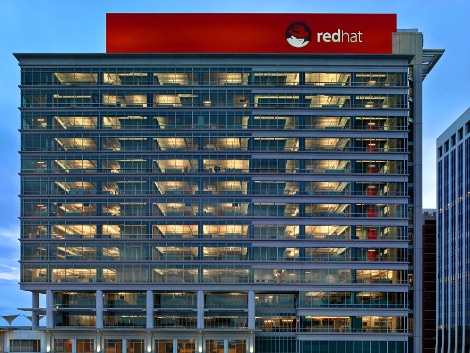Red Hat Launches Application Container OS update from March 2015
Linux distro based on Project Atomic, which combines Docker and Google's Kubernetes software
March 6, 2015

Red Hat has pushed into the enterprise container OS space, launching Red Hat Enterprise Linux 7 Atomic Host into general availability. With Project Atomic serving as the foundation of the distribution, this operating system is optimized for running the next generation of applications with Linux containers.
RHEL 7 Atomic Host is a friendly avenue for enterprises to begin evaluating and using container technology in hybrid infrastructure and at scale, making the entire picture secure throughout the application lifecycle. Atomic Host will offer automated security updates, continuously striving to make containers reliable and secure.
Community-driven Project Atomic develops technologies for creating lightweight Linux Container hosts based on next-generation capabilities in the Linux ecosystem. The tools allow creation of the new RHEL variant.
The Red Hat-sponsored Project Atomic combines Docker and Googles’ Kubernetes for deploying containers at scale, rpm-ostree for managing updates, and system as a Linux services manager. Together, they help to form the container OS.
“Red Hat Enterprise Linux Atomic Host enables enterprises to embrace a Red Hat Enterprise Linux Atomic Host container-based architecture to take advantage of the benefits of development and deployment flexibility and simplified maintenance, without sacrificing performance, stability, security, or the value of Red Hat’s vast certified ecosystem,” writes Kimberly Craven, a product marketer at Red Hat.
Many are betting on container technologies playing a significant role in how organizations deliver and manage applications, so there’s a focus in helping streamline application delivery. The goal for Red Hat here is to create a small host footprint and provide essential functionality for allowing atomic updates and running application containers like Docker.
CoreOS and Canonical’s Snappy are two early examples of increasing activity in the container OS space. CoreOS’ Rocket container launched a few months ago and is seeing healthy activity.
Canonical is in a similar position to Red Hat. Both are primarily known for Linux distribution and are interested in providing the larger next-gen framework made up of open source goodness.
All of this work is an important piece in support of next-gen Platform-as-a-Service (PaaS), an environment for easily developing applications without having to go beyond the coding. Containers are PaaS enabled, provide the portability in the bigger picture, and prevent PaaS lock-in.
OpenShift Origin community project GearD complements RHEL 7 Atomic Host, enabling rapid application development, continuous integration, delivery, and deployment of application code to containerized application environments.
GearD was created to provide integration between application containers and deployment technologies like Git to allow developers to quickly go from application source code to containerized application stacks deployed onto production systems.
Cloud Innovation Practice Helps Cloud On-Ramping and Transition
Another initiative to help advance next-gen application development is the recently announced Red Hat Cloud Innovation Practice. The practice includes a new team of experts that will assist companies in ramping to the cloud quicker.
The practice was developed out of the integration of technology and engineering expertise gained through Red Hat's recent acquisitions of InkTank, the company behind Ceph, and OpenStack cloud firm eNovance.
Read more about:
Data Center KnowledgeAbout the Author
You May Also Like






.jpg?width=700&auto=webp&quality=80&disable=upscale)
